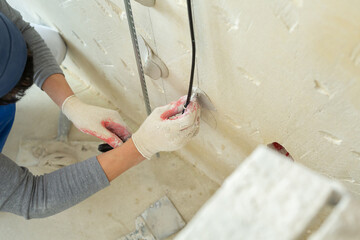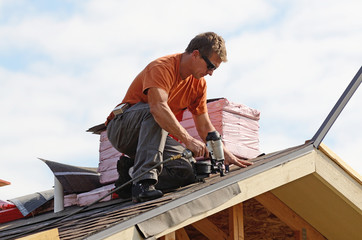Stucco remediation is a more thorough process than repair, and it’s typically needed when an underlying issue causes damage to your stucco. The first step is to determine whether the damage results from moisture intrusion or simply due to poor stucco installation. This will require a detailed inspection.

Stucco is a popular, low-maintenance home-building material that can become damaged over time. This includes fading, discoloration, mold and mildew, and wall rot. The good news is that these are easy to fix with little knowledge and proper tools. However, if the damage is extensive, it might be time to call in a professional.
If your stucco is leaking, bulging or cracking, you may need a complete repair to get it back in good shape. This service is called stucco remediation and it involves fixing the underlying problem by replastering your entire wall system.
Remediation requires a lot of work and can be very expensive, particularly if the damage is extensive. It involves an inspection, removing damaged sections of stucco and the sheathing, framing, insulation and flashing, and replacing it with new materials that are resistant to water and mold.
Stucco is one of the most popular home building materials in recent years, but it’s also prone to damage and failure. Over time, the exterior stucco on your home can develop issues such as mold and mildew growth, discoloration, and even wall rot.
Fortunately, there are ways to keep your stucco in good condition and prevent damage and problems from occurring. The first step is to inspect your home for signs of moisture intrusion or structural deterioration.
In the case of a serious issue, such as water infiltration or a large crack, it’s a smart idea to contact a professional.
A professional will be able to identify the problem and take the proper steps to repair your stucco wall system. This includes stripping the layers of stucco down to the base layer, repairing any internal damage, and reapplying the new stucco using modern materials to create a permanent fix for your home.
As a building ages, the moisture absorbed by the stucco plaster and reflected off of the elastomeric paint can cause deterioration in the structural integrity of the building envelope. This can lead to the failure of the wood framing, if the underlying structural integrity is compromised.
In some cases, a deterioration in the resistance of stucco can be indicative of other issues, such as foundation settling or drainage problems that may also be affecting the building envelope. A structural inspection performed by a professional can be helpful in determining the nature of these deficiencies and the merits of the chosen remedy, including the choice of a new layer of elastomeric paint or removal of the stucco to replace it with another material.
Regular inspections in hot and cold weather help to detect potential problems before they become too severe. Since walls expand and contract with temperature changes, a small superficial crack observed on a sunny day might reveal a larger crack when inspected in cooler temperatures.
A stucco inspection is a visual examination of the stucco on the exterior walls of your home. This is a great way to find out if there are any issues with your stucco system before they cause serious damage.
Stucco is an attractive decorative surface that can last for many years. However, it is also permeable and can be affected by moisture intrusion.
Moisture can cause a variety of problems including mold, mildew and structural damage. If it is not caught early on, it can lead to tens of thousands of dollars in repair costs.
A professional inspection will include testing for moisture and a comprehensive written report of the findings and maintenance suggestions. It is the best way to identify any potential problem areas and prevent costly repairs down the road.
Stucco remediation refers to the process of repairing or replacing damaged or deteriorated stucco on a building. Stucco is a type of plaster made from cement, sand, and water that is commonly used as an exterior covering on buildings. However, if not properly installed or maintained, stucco can be vulnerable to water damage, which can lead to structural problems and other issues.
Stucco remediation typically involves identifying and repairing any underlying issues that may be causing the stucco to deteriorate, such as water damage or structural damage. This may involve removing and replacing the damaged stucco, repairing any underlying structures, and installing new stucco to match the existing finish.


